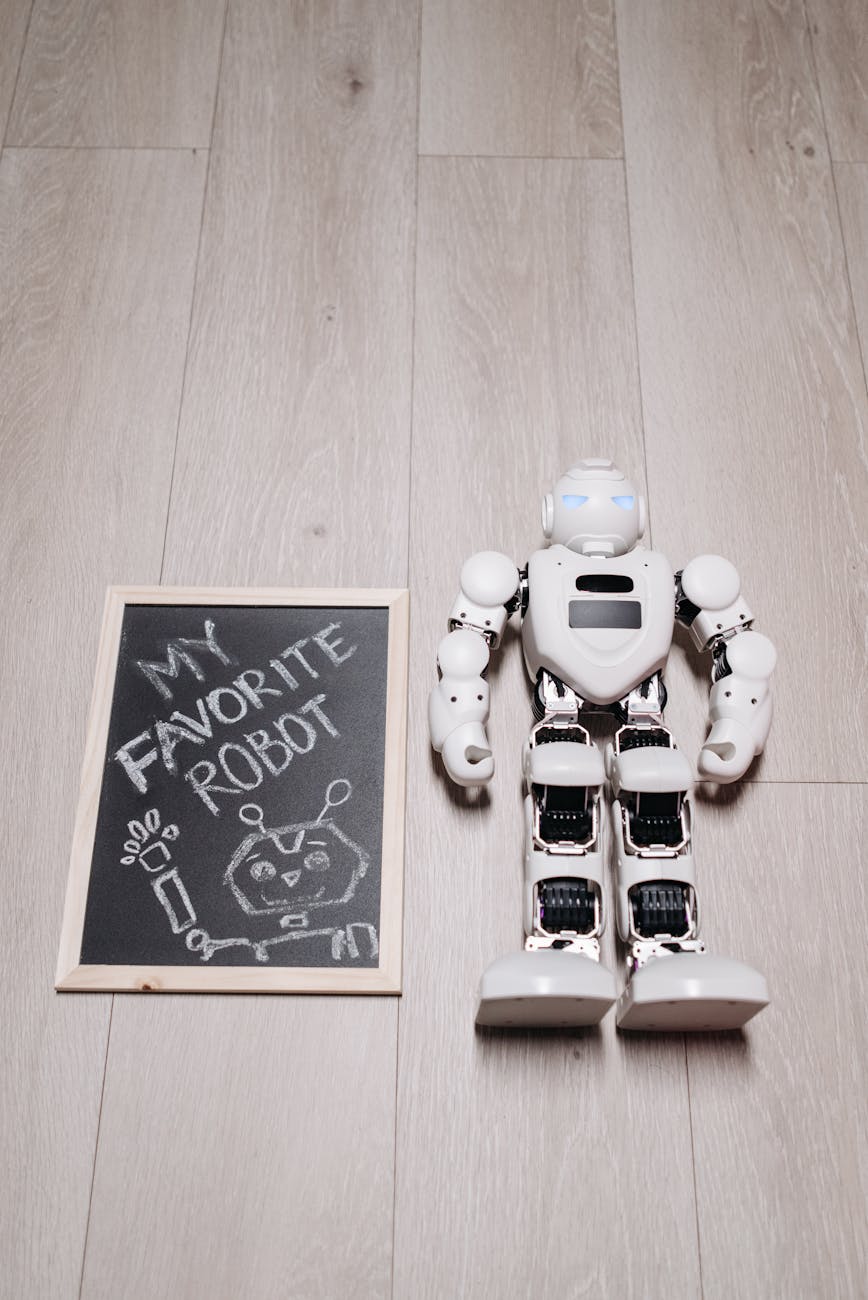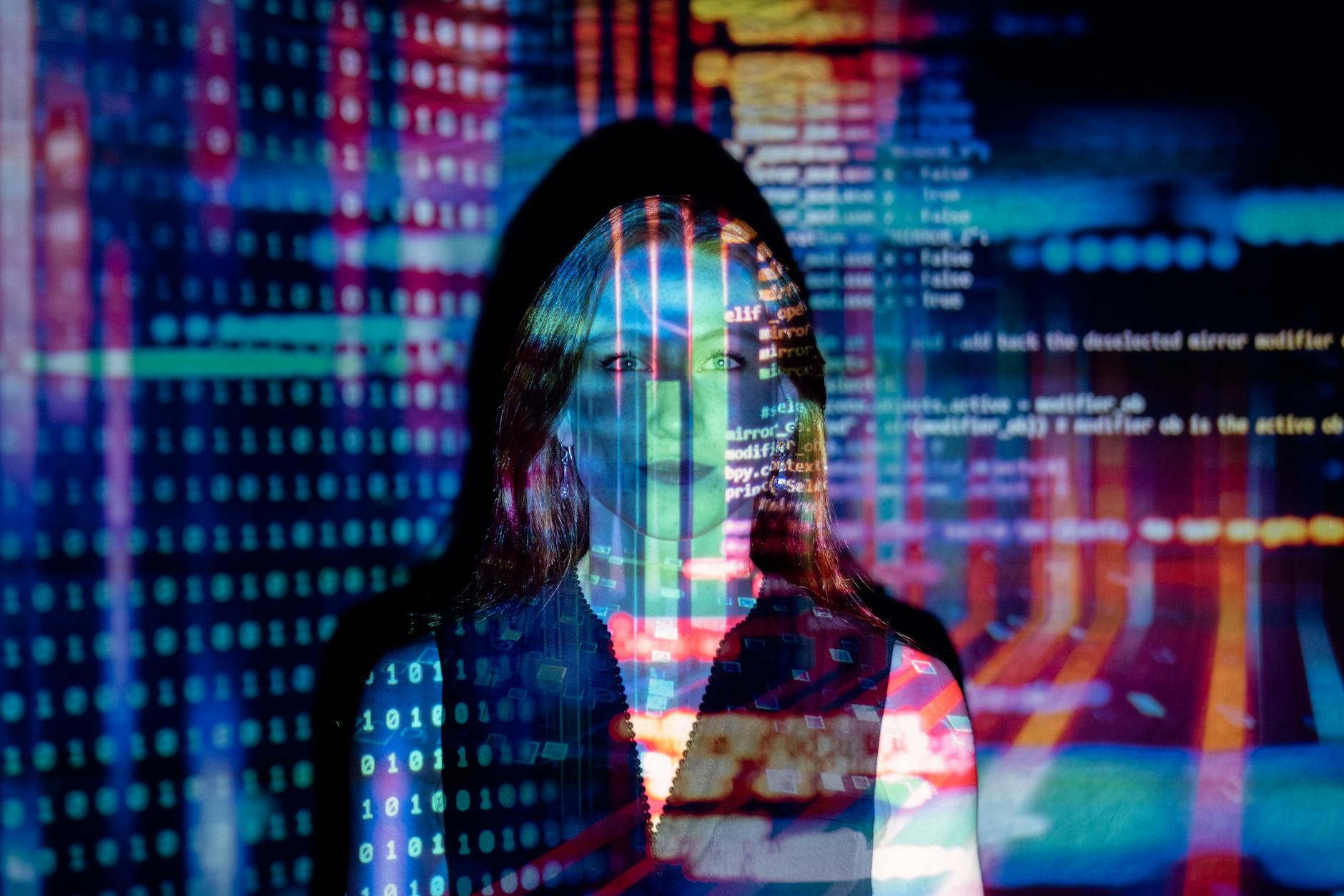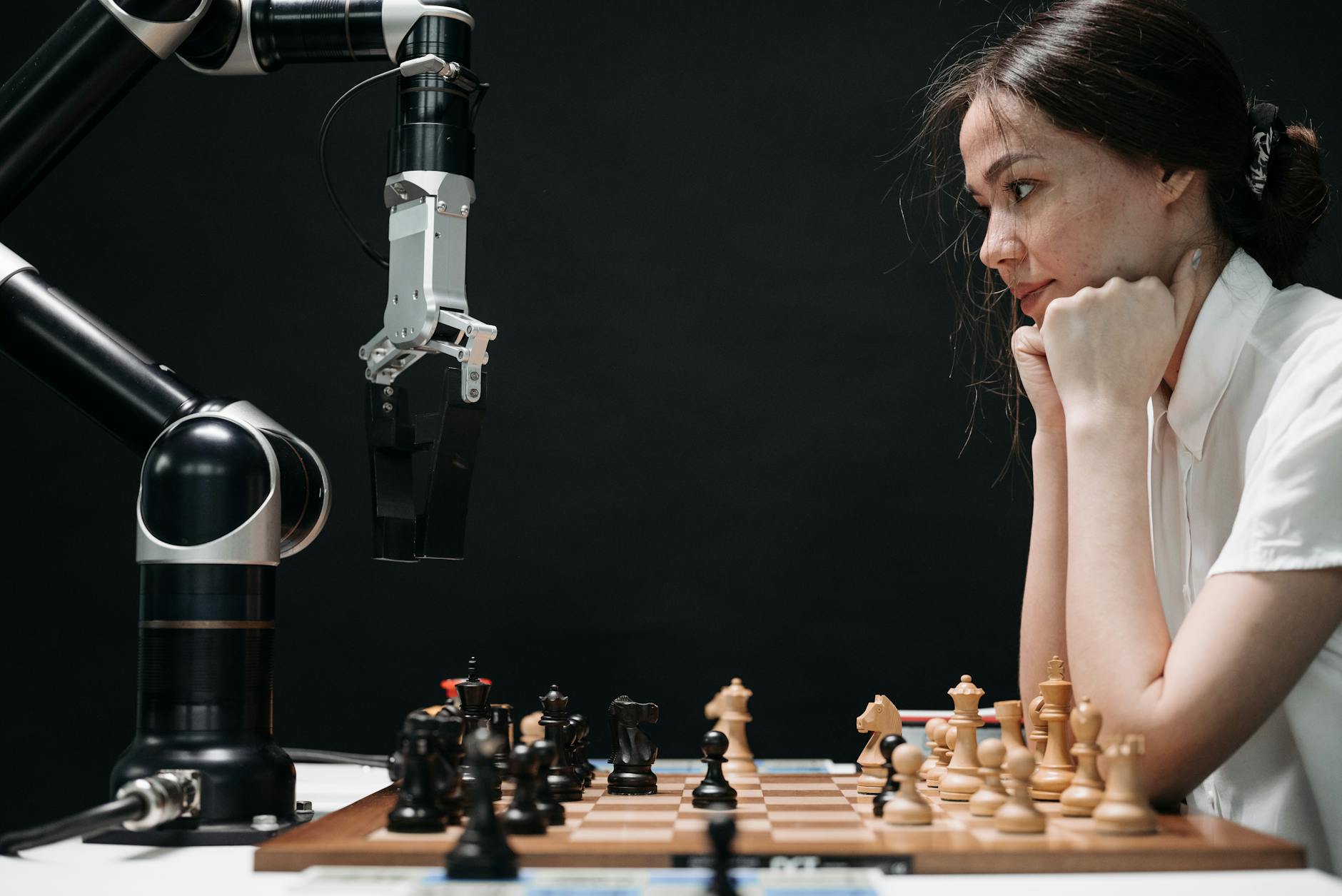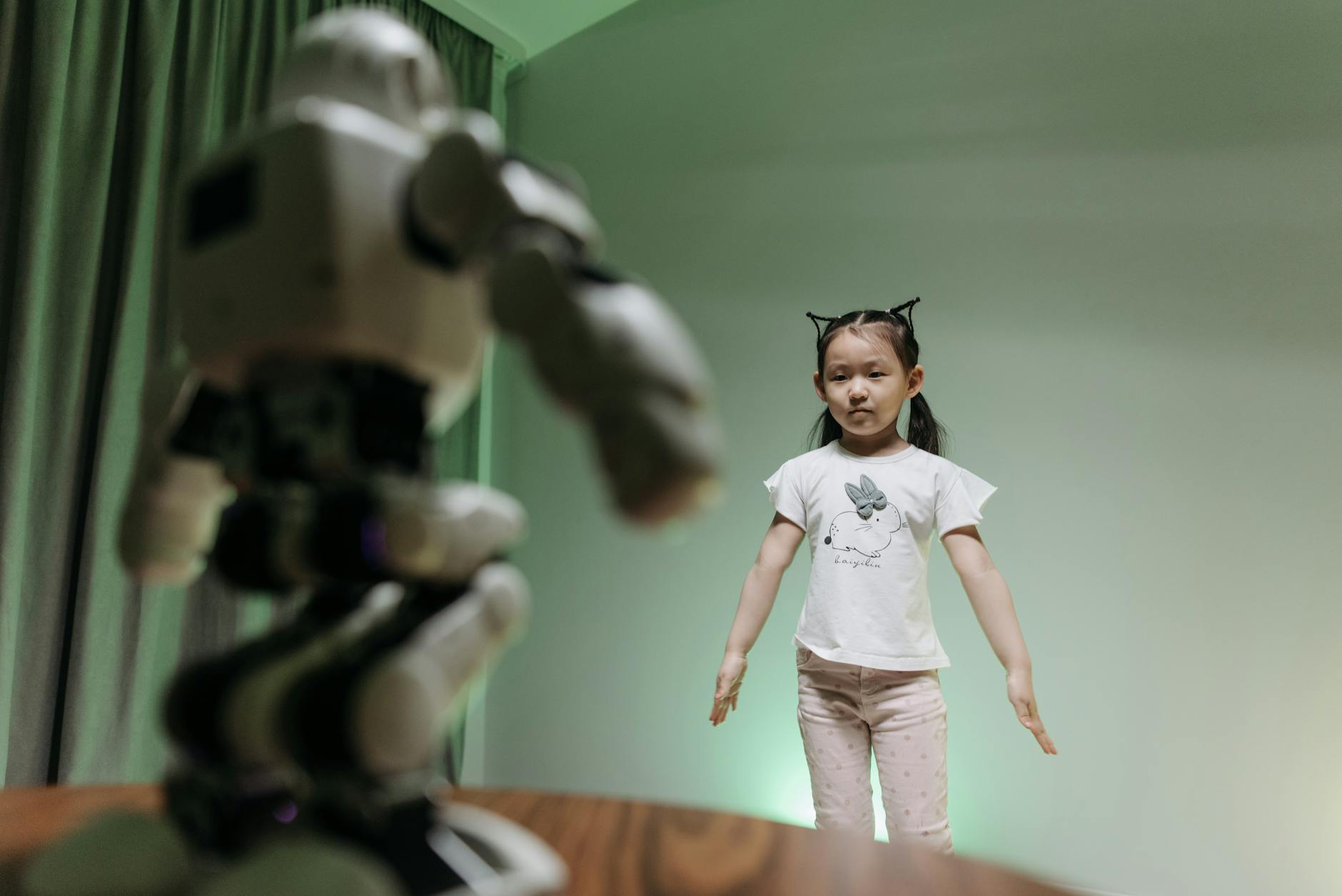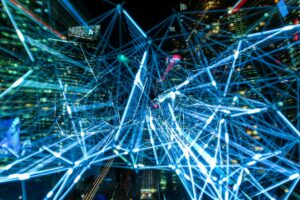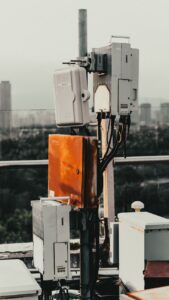Tech Clash: AI vs Machine Learning Explained Simply
Understanding AI and Machine Learning
To get a handle on artificial intelligence (AI) and machine learning (ML), you need to know how they’re different and how they click together.
Differentiating AI and Machine Learning
Artificial intelligence is about tech that copies stuff the human brain does, like sorting out data and giving advice (Google Cloud). AI’s big goal is to create systems that do things humans usually do.
On the other hand, machine learning is like AI’s little brother. It’s all about cooking up algorithms that help machines learn from data and make guesses.
| Feature | Artificial Intelligence (AI) | Machine Learning (ML) |
|---|---|---|
| What It Is | Tech that acts like the human brain | A piece of AI that uses algorithms to get better with data |
| Aim | Think like humans, solve problems | Spot patterns, predict stuff |
| Tricks it Uses | Genetic algorithms, neural networks, rule systems | Learning with teacher (supervised), learning alone (unsupervised) |
| Where You Find It | Chatbots, self-driving cars, tips on what to watch | Image tagging, spotting scams, custom suggestions |
The Relationship Between AI and ML
AI and machine learning are best buds. While AI is the big idea of smart systems that act human-ish, ML is the plan to reach that. Machine learning plays with math and rules to pick up on data without being told what to do, meaning it gets smarter with time (Google Cloud).
AI uses all sorts of tactics like genetic tricks, brain-like networks, deep thinking, search tricks, rule-following, and machine savvy. Machine learning splits into learning with guidance (supervised) and going solo (unsupervised).
AI and ML help make decisions quicker and cut down on mistakes by getting the data right. This relationship pushes systems to dish out top-notch advice and decisions, making things run smoother and sparking new ideas across different fields (Microsoft Azure).
Applications in Different Sectors
Artificial Intelligence (AI) and Machine Learning (ML) are changing how businesses work by making things faster, better, and more efficient. This section takes a closer look at how AI and ML are being used in retail, healthcare, and finance.
AI and ML in Retail
In retail, AI and ML are helping to make shopping more fun and easier. They do this by suggesting what customers might like, managing what’s in stock, and adjusting prices.
- Personalized Suggestions: AI figures out what customers want and offers product ideas to make shopping easy and delightful.
- Stock Management: ML predicts what products are in demand to avoid having too much or too little in stock.
- Flexible Pricing: AI tweaks prices based on current trends to boost sales and profits.
| Feature | Gain |
|---|---|
| Personalized Suggestions | Happier customers |
| Stock Management | Fewer stock issues |
| Flexible Pricing | Better sales potential |
Using AI in Healthcare
AI helps doctors and nurses by analyzing loads of data to improve patient care.
- Disease Detection: ML checks medical scans to spot illnesses accurately.
- Outcome Predictions: AI guesses patient recovery and potential risks.
- Admin Tasks Automation: AI handles paperwork, so healthcare workers can focus more on patients.
| Feature | Gain |
|---|---|
| Disease Detection | Accurate spotting of illnesses |
| Outcome Predictions | Better patient results |
| Admin Tasks Automation | More time for direct patient care |
Shaking Up the Finance Sector
Finance is seeing a big change thanks to AI and ML, with more and more money being invested into these tech solutions.
- Credit Checking: AI looks at all sorts of data to figure out if someone can get a loan.
- Fraud Monitoring: ML scans every transaction to catch any shady activities swiftly.
- Tailored Investment Plans: AI designs investment paths based on what you’re comfortable with and the market’s condition.
| Feature | Gain |
|---|---|
| Credit Checking | Better accuracy in credit checks |
| Fraud Monitoring | Quick scam spotting |
| Tailored Investment Plans | Personalized investment advice |
AI and ML are continually bringing fresh, game-changing developments to retail, healthcare, and finance, showing their ability to innovate and make things more efficient.
Impact on the Workforce
Artificial Intelligence (AI) and Machine Learning (ML) are set to shake things up in the job market. Let’s talk about who might be out of a job and where folks might need to retrain or rethink their careers.
Job Displacement Predictions
Robots and computers aren’t just science fiction—they’re making waves in real life, too. Experts at McKinsey & Company say about 15 percent of jobs worldwide could be automated, potentially affecting around 400 million people by 2030. If AI takes off quickly, this could jump to 30 percent, with a whopping 800 million folks having to find new gigs.
| Scenario | Percentage of Workforce Displaced | Number of Workers Displaced (millions) |
|---|---|---|
| Base Case | 15% | 400 |
| Fastest Adoption | 30% | 800 |
Besides, a small slice of workers—roughly 3 percent—might need to switch career paths entirely due to these tech changes.
Implications for Different Occupations
No job is entirely safe in the AI-backed future. Roles heavy on physical tasks or repetitive data work are especially vulnerable. More than 70 percent of tasks in these areas—like office admin, manufacturing, driving trucks, or whipping up meals—could get a tech makeover.
| Occupation | Percentage of Tasks Potentially Automatable |
|---|---|
| Office Administration | >70% |
| Production | >70% |
| Transportation | >70% |
| Food Preparation | >70% |
Jobs expected to expand are those needing a more human touch—think bosses, plumbers, teachers, nurses’ aides, and tech whizzes.
Knowing what’s coming helps young IT pros and a host of other workers stay ahead of the curve. Understanding how AI and ML could change the job landscape means you can gear up for these shifts and chart a new course toward exciting work opportunities.
AI in Education
Artificial Intelligence is shaking things up in education. It’s not just about learning from textbooks anymore – AI’s giving the whole teaching scene a makeover.
Transforming Instructional Design
AI is putting some serious power in the hands of educators, making course creation way more efficient. Check out these handy tools:
- Speech Recognition: Turns spoken lectures into text, making it super accessible.
- Image Descriptions: Writes out what’s in images to help folks with visual impairments.
- Plagiarism Spotting: Keeps the cheaters at bay by flagging copied work.
- Smart Grading: Speeds up scoring and ditches the grading bias.
- Math Help: Breaks down tough math problems for easier understanding.
A nod to EDUCAUSE, who’s shown that AI helps tie learning goals with fitting activities and tests, giving everyone a learning vibe that suits them best.
Personalized Learning and Adaptive Teaching
AI’s tuned-in to students, switching up lessons based on how they’re doing (EDUCAUSE). This means learners get just the right amount of help and a good challenge to boot.
Adaptive Learning
With AI’s help, classes are far from one-size-fits-all. It fine-tunes:
- Speed: Adjusts how fast students chew through lessons.
- Complexity: Tweaks how tough the stuff is depending on students’ performance.
This keeps learners hooked and lets teachers see who’s nailing it (EDUCAUSE).
Intelligent Tutoring Systems
Smart tutoring setups use AI to bring you:
- Tailored Tips: Personalized help for tough topics.
- Instant Feedback: Quick reactions to what students say.
- Custom Learning Roads: Unique learning paths based on how each student is doing.
By rolling in these features, AI makes learning a more interactive and fun ride (EDUCAUSE).
With AI’s mind-blowing power, education’s no longer just about passing on facts – it’s about crafting a learning experience that fits each student’s groove perfectly.
Future of AI and Automation
Growth and Potential Changes
AI and automation are racing forward faster than a kid chasing the ice cream truck. These tech wonders are shaking up industries across the board. By 2030, around 15% of workers worldwide—think roughly 400 million folks—might find themselves replaced by machines. If things speed up, this could jump to 30%, or a whopping 800 million folks (McKinsey & Company).
We’re talking shops, hospitals, banks, trucks, and factories all getting supercharged with AI and machine learning. The benefits? Processes get slicker, customers happier, and everything runs like a well-oiled machine. Sure, some jobs might vanish, but countless new ones will pop up outta nowhere.
| Industry Applications | AI and Machine Learning Benefits |
|---|---|
| Retail | Personalization, Inventory Management |
| Healthcare | Diagnostics, Treatment Plans |
| Finance | Fraud Detection, Investment Strategies |
| Manufacturing | Process Automation, Predictive Maintenance |
| Transportation | Autonomous Vehicles, Logistics Optimization |
Social and Economic Shake-Up
Bringing AI and automation into the mix means some big changes are coming—around 3% of the global workforce might need to pack up and try something new by 2030. Jobs with repetitive tasks or number-crunching are on the decline, while stuff like management, plumbing, teaching, and tech work are set to boom.
While many jobs are on the chopping block, AI and automation should cook up even more gigs. By 2030, we could see an increase of between 21% to 33% in new jobs, adding 555 million to 890 million positions. So, no need to panic—new doors will open just as old ones close.
Cash pouring into AI, especially finance, is going through the roof. In the U.S., investment in finance AI tripled from 2013 to 2014, hitting $12.2 billion. Now, algorithms decide loans, whip up custom investment plans and have made a huge splash in the finance world.
The way AI and automation are heading, we’re looking at a future jam-packed with big shifts—both daunting and full of opportunity. Getting education, job training, and smart policies ready will be key to riding this wave without wiping out.
